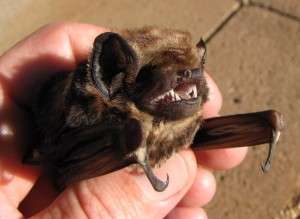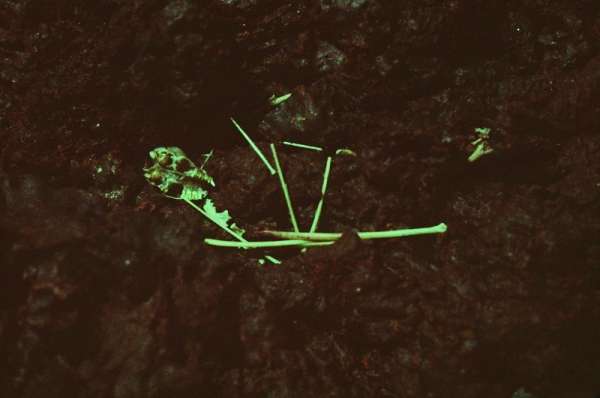What does the Hawaiian lava-tube bat tell us about bat paleobiogeography?

Hawaii is among the most remote places on earth, and that fact is reflected among its vertebrate fauna. In fact, only two extant mammal species can claim to be native to the islands: the Hawaiian monk seal and the Hawaiian hoary bat. Perhaps it is obvious that an aquatic and a volant mammal were the only species to make the 3,000 mile plus journey to the middle of the Pacific Ocean, but, at least in the case of bats, paleobiogeography is rarely straightforward.
The extant Hawaiian hoary bat has been the subject of recent research demonstrating that it is likely to have colonized Hawaii at least twice from the North American continent. It is generally considered to be a subspecies of the hoary bat (Lasiurus cinereus) that is native to much of North, Central, and South America. The hoary bat is known to migrate for long distances, and has been hypothesized to have ended up in Hawaii as a result of these long distance migratory abilities. This species has also been reported either as a resident or transient in Bermuda, the Galapagos Islands, and even Iceland.
That the hoary bat could make it to Hawaii is slightly less surprising than initially suspected. A second, extinct bat species native to Hawaii (the lava-tube bat, formally named Synemporion keana in a recent paper by Ziegler et al. 2016), however, raises additional questions about when and how bats were able to reach Hawaii in the first place.
The lava-tube bat is known from over 100 specimens found on the five largest Hawaiian islands. Although its morphology is fairly well-understood, its relationships to living taxa are difficult to conclude. Ziegler et al. (2016) only align it with the family Vespertilionidae, the so-called evening bats, which also includes the hoary bat. If the lava-tube bat can be demonstrated to belong to the tribe Lasiurini, along with the hoary bat, its dispersal to Hawaii may have a similar explanation. The Vespertilionidae are found worldwide, however, and without a more definitive placement in the bat family tree, it is difficult to say where the species originated.

These problems also persist deeper in time. When the earliest bats show up in the fossil record during the Eocene Epoch, they are known effectively simultaneously from Australia, Africa, Europe, India, North America, and South America. Most of these species belong to extinct families whose affinities with living groups are unknown. Nonetheless, by the Eocene most of the major landmasses of Earth had separated, necessitating that these early bats travel great distances over water to colonize new continents. Where the earliest bats evolved is unclear, other than they likely originated on one of the northern continents (North America, Europe, or Asia) due to the close relationship between bats and other northern mammals.
The continuing research into the Hawaiian lava-tube bat should begin to shed light on how bats disperse long distances across open ocean and may provide valuable insight into how the earliest bats spread across the globe.
More information: A second endemic land mammal for the Hawaiian Islands : a new genus and species of fossil bat (Chiroptera, Vespertilionidae). (American Museum novitates, no. 3854) hdl.handle.net/2246/6641
Bonaccorso FJ, McGuire, LP (2013) Modeling the colonization of Hawaii by hoary bats (Lasiurus cinereus). In Adams, RA, Pedersen, SC, editors. Bat Evolution, Ecology, and Conservation New York: Springer. 187–205.
Provided by Public Library of Science
This story is republished courtesy of PLOS Blogs: blogs.plos.org.

















